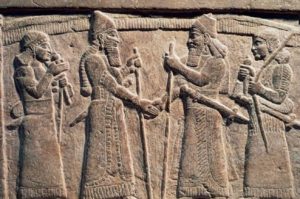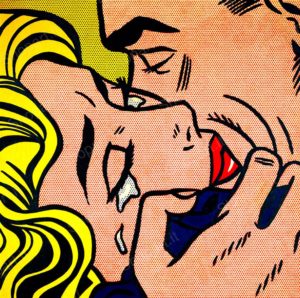How will you greet?
Coronavirus: no kissing, hugging or shaking hands.
At the basis of the restrictive measures all countries have been adopting to face the current sanitary emergency is the need to avoid close contacts between people.
For weeks now, in fact, the experts have been asking us to reduce our social activity and avoid any physical interaction. In brief, they’ve been asking us to give up our habits, our warm “Ciao”, our Italianness.
Can habits and gestures so deeply rooted in our culture be cancelled though?
Our lives are actually full of touching rituals that create a feeling of connection between people, on both literal and psychological levels.

If we dig in the past, which art can greatly help us do, we learn that the various forms of greetings are thousand-year-old traditions that have expressed different meanings throughout history, so much so as to develop a spontaneous choreography and symbology in our daily lives.
The handshake, for example, is a gesture that dates back to the ancient times and has been a symbol of universal harmony since. It was first recorded in Babylonian times, in the encounter between the Assyrian king and the Babylonian commander, as depicted on the throne of Shalmaneser III preserved in Baghdad’s national museum.
While in the classical world, the handshake appeared on vases, tombs and temples representing scenes of weddings or funerary rituals. In Greece, for example, it was first mentioned in the Iliad and the Odyssey, and represented in the image of two goddesses (Hera and Athena) holding each other’s hand as a sign of renewed friendship in a stone from the 5th century BC preserved at the Acropolis Museum in Athens.


The contexts change, but handshakes have symbolised a condition of trust and mutuality all the way to today, when they keep being used as a sign of respect, peace and collaboration.
Christianity brought the ritual of the kiss instead, introducing it first in the divine world and then in religious ceremonies. In his “Letter to the Romans”, Saint Peter instructed his followers to “greet each other with a holy kiss”.
Muslims still kiss the black stone of the Mecca, and Jewish people kiss the Wailing Wall in Jerusalem, whereas Catholics kiss the feet of the Pope (or the ring of cardinals) to signify extreme devotion to the sovereign.
For centuries, the kiss has constituted a sign of love, as well as a way to seal agreements, friendships, or even infidelity.

Let’s just think about Judas’s kiss, depicted in dozens of paintings (like the one by Giotto in the Scrovegni Chapel), or about the more modern kisses by Klimt, Roy Lichtenstein or Bansky.
I think it’s early to say when our greeting habits will be reintroduced in work places, religious rituals, sport events or at dinners among friends, but I’m convinced that the need for connection based on human nature is stronger than the fear of a pandemic.
For now, I reckon it might be useful (and benefit us) to improve other forms of communication. We could be more creative and overcome our limits, testing new concepts of expression and possibly using the arts as fields of research for future generations. In fact, we could simply learn to communicate making a more sensible use of the words (and we have the endless vocabulary of the Italian language to thank for that), or accompanying those stereotypical sentences like “Hi, how are you?” with deep visual contact or more emphasised and vivacious body movements… we Italians like to gesticulate after all!

